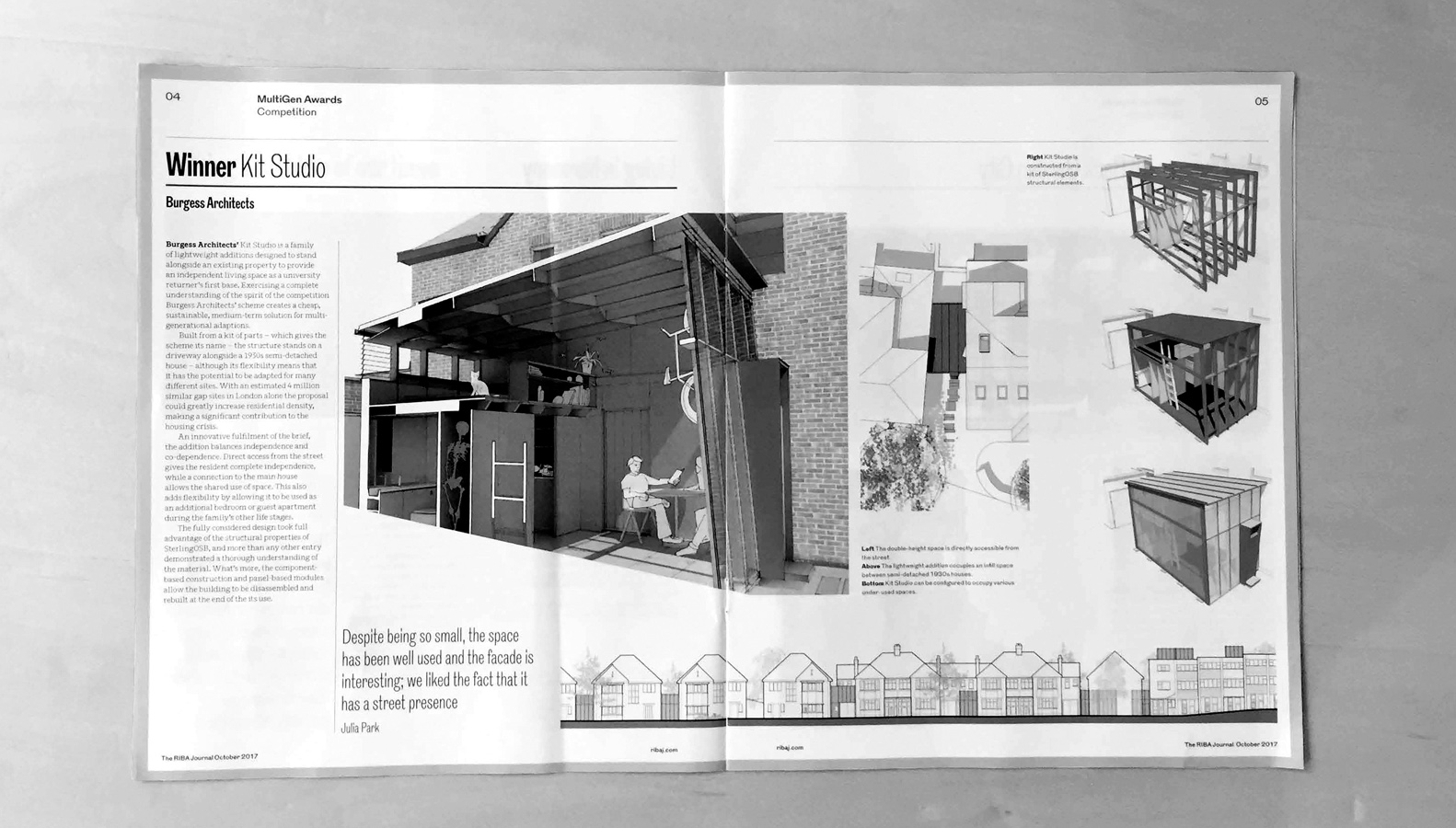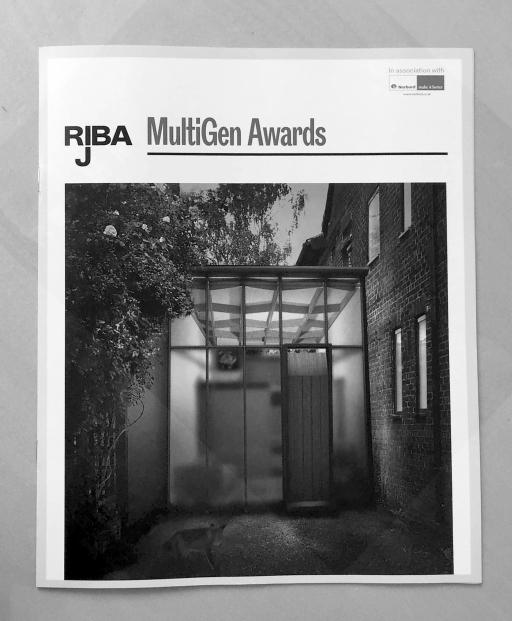The competition responds to the rising popularity of multi-generational living during the housing crisis. Architects were challenged to propose innovative solutions to allow extended family members to live together on a single footprint.
Utilising the structural potential of SterlingOSB, architects were free to propose any new mode of adaptation that would make an existing dwelling suitable for multi-generational living. The only constraints were that the addition should increase the useable area of the property by no more than 35m2 and that the design needed to take the form of an independent unit with separate access.
The entrants did not disappoint – after much deliberation Burgess Architect’s Kit Studio was selected as the winning scheme. Built from a kit of parts – which gives the scheme its name – the structure is designed to provide a base for young adults returning to the family home after university. The structure which stands on the driveway of a 1930’s semi-detached house balances independence and co-dependence. Direct access from the street provides the resident with privacy, whilst access to the main house allows shared use of communal areas. Not only did the design take full advantage of the structural potential of SterlingOSB, it also has the potential to be implemented on a large scale.
Stephen Proctor said: “The most interesting entrants looked to wider issues – adding a variety of unit types to a repetitive suburban landscape while addressing specific lifestyles. These entries – an independent starter pad annex for a ‘university returner’ through the lightweight infill of a 1930s semi-detached streetscape, a ‘Back Garden City’ that offered the possibility of a community of starter homes, elderly annexes, and (most-promising) co-housing clusters at the heart of a typical suburban perimeter block of back-to-back gardens – all triggered an interesting discussion about the pros and cons of the low key, almost covert, revitalisation and densification of the fringes of our towns and cities.”


